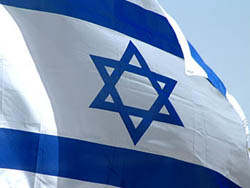Israeli election facts and figures
 Tel Aviv - Some 4.8 million Israelis (of a total population of 7.5 million) are eligible to vote in Tuesday's election.
Tel Aviv - Some 4.8 million Israelis (of a total population of 7.5 million) are eligible to vote in Tuesday's election.
Of them, 81 per cent are Jews, 14 per cent are Muslims, Arab- Christians or Druze, and 5 per cent are immigrants or their families who are not registered as Jews.
Voting will take place at 9,263 polling stations, including 56 in prisons, and 194 in hospitals.
Israel's election system is one of proportional representation. The whole country is considered one electoral district, with mandates allocated according to the percentages of votes, rather than the "first past the post" method. As a result, the number of parties contesting the election is large despite the small size of the country.
As many as 33 lists are taking part in this year's election., competing for 120 Knesset seats.
They range from the large mainstream parties, to smaller lists which are in effect pressure groups, such as The Green Leaf Party, a perennial - and perennially unsuccessful - feature of recent Israeli elections, whose main campaign issue is the legalization of soft drugs.
The threshold for entering the Knesset is 2 per cent of the vote and in the last election, in 2006, 12 of the 31 lists competing made it.
Once the results are known, Israel's president, whose duties are largely ceremonial, meets with the heads of all parties elected to parliament to consult about their choice for premier.
Based on these discussions, he then entrusts the formation of a government to the party leader with the best chance of putting together a coalition - because no party has ever won more than 61 Knesset seats, all Israeli governments have been coalitions.
Traditionally, the nod has usually gone to the leader of the largest party, but this is not axiomatic.
Elections are normally scheduled to take place every four years, but in Israel's turbulent politics, Tuesday's elections are the third in just six years.
Voter turnout has traditionally been high in Israel - where many citizens are politically engaged - at around 80 per cent. It was highest in the first elections in 1949 (87 per cent) and lowest in the prime ministerial elections of 2001 (62 per cent). Only 63.5 per cent voted in the 2006 elections. (dpa)